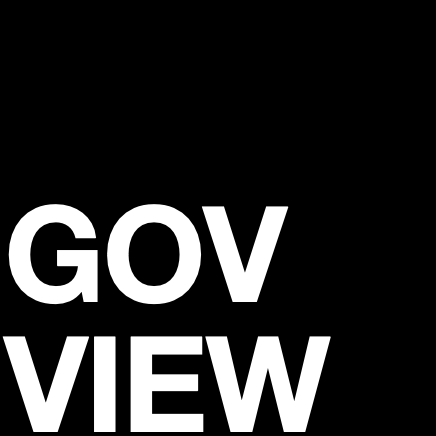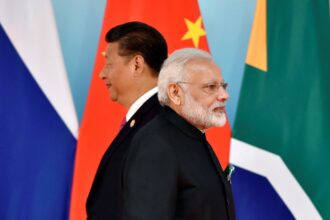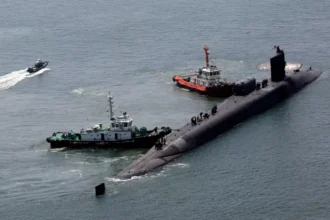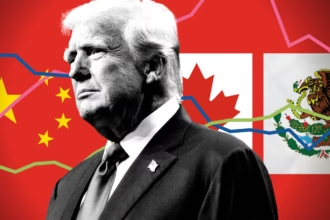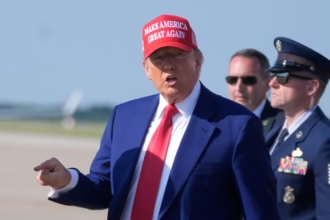In a subtle but significant geopolitical shift, India appears to be deepening its engagement with the BRICS bloc—Brazil, Russia, India, China, and South Africa—while neighboring Pakistan continues to cultivate its longstanding strategic relationship with the United States. The divergence reflects differing priorities in trade, security, and global influence, as both countries navigate a rapidly evolving international landscape.
India’s Strategic Pivot to BRICS
India has long balanced its foreign policy between major powers, leveraging partnerships with the U.S., Europe, and Asian neighbors. Recently, however, policymakers in New Delhi have signaled an intent to strengthen economic and political ties within the BRICS framework.
Trade discussions, investment forums, and infrastructure partnerships under the BRICS umbrella have accelerated. Officials argue that closer engagement with BRICS countries offers India multiple advantages: access to emerging markets, energy security, and opportunities to participate in joint development projects, particularly in technology, finance, and green energy.
“The BRICS platform allows India to project its influence in a multipolar world while diversifying its economic partners,” said Dr. Arvind Khanna, a foreign policy expert at the Observer Research Foundation. “It’s a pragmatic approach that complements its ties with Western nations without creating unnecessary friction.”
Economic and Financial Implications
India’s tilt toward BRICS is also reflected in financial and development initiatives. New Delhi has supported proposals to expand the BRICS New Development Bank, providing access to funding for large-scale infrastructure projects. Trade agreements and joint ventures are being explored with Brazil and South Africa, while ties with Russia and China continue in energy and technology sectors.
Analysts note that these moves could help India hedge against global economic uncertainties, such as fluctuating commodity prices and supply chain disruptions, while ensuring strategic autonomy in a multipolar international order.
Pakistan’s Continued Alignment With the U.S.
Meanwhile, Pakistan remains closely aligned with Washington, focusing on military cooperation, economic assistance, and counterterrorism coordination. Despite occasional friction over regional issues, the U.S.-Pakistan relationship remains robust, underpinned by decades of security partnerships and strategic alignment.
Washington has maintained military aid, training programs, and defense contracts with Islamabad. Pakistani officials emphasize that their continued engagement with the U.S. ensures both economic stability and geopolitical leverage, particularly regarding regional security concerns in Afghanistan and countering extremist groups.
Regional Security Dynamics
The divergence between India and Pakistan’s foreign policies highlights the complexity of South Asia’s security environment. India’s engagement with BRICS and emerging economies is partly a response to China’s growing regional influence, while Pakistan’s reliance on U.S. support underscores its security-driven approach.
Military analysts note that these alignments are not mutually exclusive, but they reflect different risk calculations. India seeks to balance Western partnerships with emerging market engagement, while Pakistan prioritizes immediate security guarantees and economic assistance.
Global Implications
India’s pivot to BRICS may influence trade, investment, and diplomatic patterns beyond South Asia. For instance:
- Energy and Resources: India may secure diversified energy supplies from Brazil and Russia.
- Technology Collaboration: Partnerships within BRICS could foster joint ventures in AI, biotechnology, and green energy.
- Geopolitical Leverage: Closer ties with BRICS allow India to assert influence on global platforms like the G20 and UN.
Conversely, Pakistan’s continued U.S. alignment positions it as a strategic interlocutor in Western-led initiatives in the region, including counterterrorism, maritime security, and economic development projects.
Looking Ahead
The contrast between India and Pakistan’s strategic choices signals a broader trend of multipolar alignment in South Asia. As New Delhi strengthens its BRICS engagement, it demonstrates confidence in navigating global markets independently, while Islamabad’s U.S.-centric approach underscores enduring security concerns and reliance on established alliances.
Observers suggest that this divergence is likely to continue shaping regional cooperation, trade flows, and security planning. For policymakers in Washington, Beijing, and New Delhi, understanding these nuanced shifts is critical to predicting the future of South Asian geopolitics.
Conclusion
India’s increasing involvement with BRICS and Pakistan’s sustained U.S. partnership reflect two distinct pathways in a region at the crossroads of emerging powers and traditional alliances. As global powers recalibrate their strategies, these choices will influence trade, security, and diplomacy across South Asia and beyond, shaping the balance of influence for years to come.
